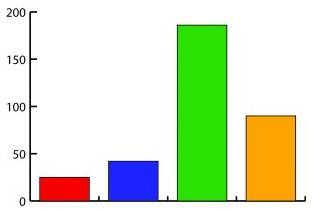Statistics in Business Decision Analysis
Using Statistics in Business Decision Analysis
There is a crucial role of statistics in business decision analysis. In a competitive market environment, a business cannot survive merely by making decisions based on instinct, guesswork and approximations. Acquiring scientific data and information, and analyzing that information accurately can help to make more profitable decisions for the business organization. An organization that is strong in the core area of decision making is likely to achieve greater success for its stakeholders in the long run, have less risk exposure, and have a lower chance of missing lucrative opportunities.
Different Applications of Statistical Analysis
Any business operates under conditions of probability and uncertainty because there are too many variables and external factors that can influence a situation. Therefore, the decision making process must include collection and analysis of as much data and information as possible in order to arrive at optimal business decisions. Computerized analysis of data has made the task simpler. The following are a few examples where statistical methods can help in decision making:
- Random sampling techniques are used by production managers and the QC department to determine quality grades of materials. Accountants use these same techniques while auditing accounts receivables for their clients.
- Regression and Correlation analysis may be used by the finance department to correlate a set of financial ratios with other business variables.
- Marketing departments may apply statistical Test of Significance for their market research about a suitable target market for their new products or services.
- Forecasting techniques may be used by the top management to estimate sales volume for the next budget year.
- Standard deviation methods are used by various profit centers within the organization to cut down the inherent risk in a particular business decision.
Financial Ratios as a Tool of Business Decision Analysis
One of the valuable statistics in business decision analysis is the internal accounting figures of the organization, or the performance data. The decision analysis team within the company has a key responsibility to analyze the company’s performance in measurable, statistical terms, and evaluate the deviations from group goals, if any. The financial performance or profitability figures, assets and liabilities figures, inventory and sales figures are analyzed with the help of business ratios. These ratios provide a crystallized picture of the business and test its performance on various parameters. For example, Current Ratio indicates the position of the company’s current assets against current liabilities. The most critical financial ratios for any company include Profit to Sales ratio, Debt to Equity ratio, Current ratio, and Return on Capital Employed.
Key Elements of Statistics in Business Decision Analysis
The important elements to consider when using statistics in business decision analysis, particularly in process improvement, are the accuracy of collected data and information, the choice of statistical design or statistical model to analyze that data, the clear presentation of findings and conclusions, and finally, managerial recommendations on how to take corrective measures based on these findings and conclusions.
Photo Credit: graphican www.sxc.hu
